Vincent Luis has a sliver of an advantage over Jonny Brownlee as they blast out of transition onto the run. Both have a Short Chute* to take but when will they play their hand?
Neither is giving anything away, there isn’t time. There’s just one more lap to determine the winner of this epic race.
The crowd, eager not to miss one single millisecond of this brutal game of multisport cat and mouse, is straining against the branded barriers as two of the greatest short-course triathletes in the world battle it out on one of the world’s shortest triathlon courses.
It’s a gladiatorial battle for the digital age; spectators, and us media types, trying their best to capture this split-second action. It’s nigh-on impossible. The outcome can change in a flash.
Sure enough, Brownlee take his Short Chute (see box below), cutting the course at a designated point to steal the lead and attempt to eke out a winning advantage. The problem? Luis still has his to take. Does Jonny have enough of a gap and course left?
It’s the 2012 Olympics all over again, the same Englishman being chased by a (different) Frenchman for a medal. There might be less at stake here, in Mallorca, at the beginning of November, but you wouldn’t know it.
Competition is still competition. The same principles apply six years on.
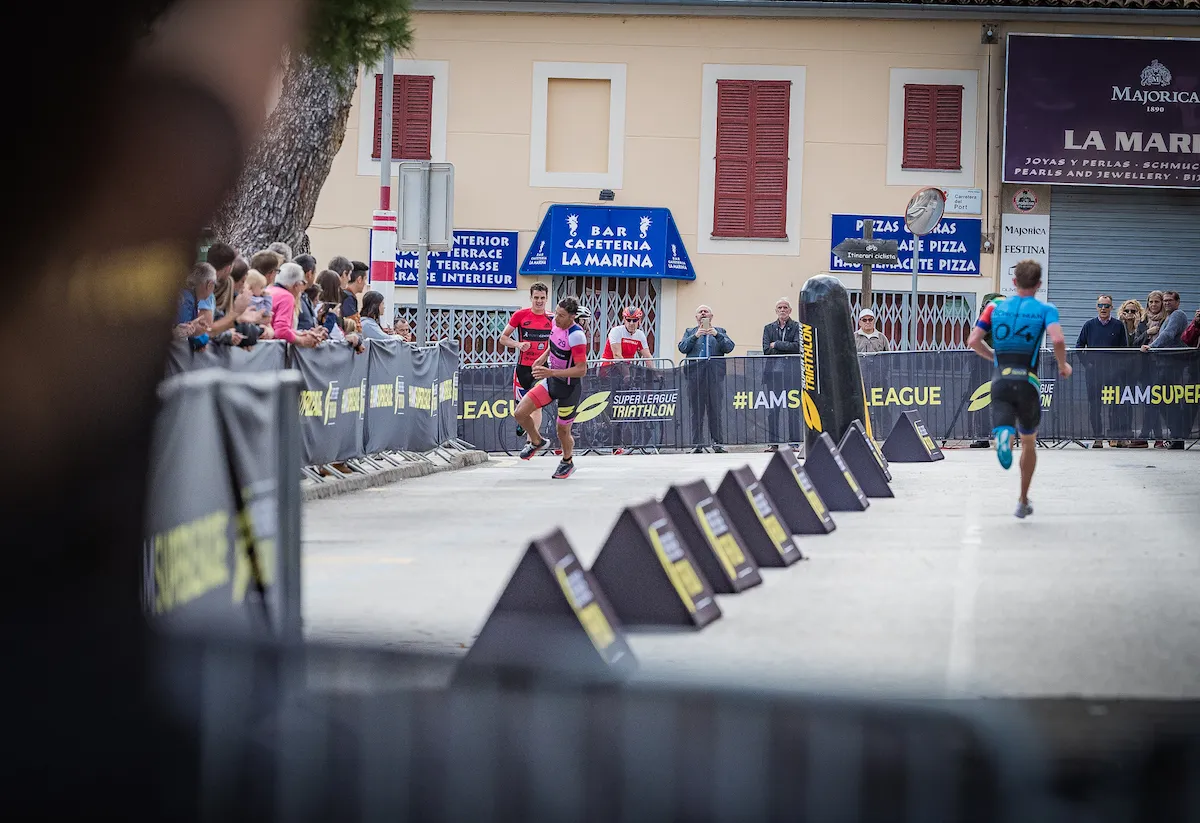
And then it happens, Luis makes his move, he has to, it’s his one and only chance to cut the course. Brownlee is all but there… but Luis has timed this to perfection and seems to have the fresher legs.
The crowd is screaming and banging those ridiculously annoying blow-up batons against the hard-working barriers. Being yellow, it’s like watching a load of Minions being comically beaten to death.
The athletes don’t see any of this, so single-minded are they now in their pursuit of the finish line, which is now just one uphill and downhill away.
The commentators are hitting new levels of pitch that the speakers are starting to vibrate, the noise seeping into every nook and cranny of this tiny, once-tranquil, marina in the south of the island, until it feels like the entire area is pulsating to the same beat.
We’ve lost our voice screaming ‘come on, Jonny’ like it’s stuck on repeat. And then it’s over. Luis crossing the line to take the win. Jonny just seconds behind for silver.
One by one the best male elites in the world run through and collapse to the floor, only breaking their respite to shake hands with the competition and share words of congratulations.
They’re knackered? We’re knackered. Welcome to Super League Triathlon.
*Editor's note: This was originally written at the end of 2018 and featured in the April 2019 edition.
What's the Short Chute in Super League Triathlon?
The Short Chute creates a slightly shorter route around the race course for those athletes who earn one, basically giving a time bonus, but in real time! You earn one by winning one of the early stages/heats on a Championship weekend.
In the Mallorca 2018 race, both Jonny Brownlee and Vincent Luis had won their respective stage 1 Sprints in the Sprint Enduro, meaning they both had a Short Chute to take in the afternoon’s final.
What is Super League Triathlon?
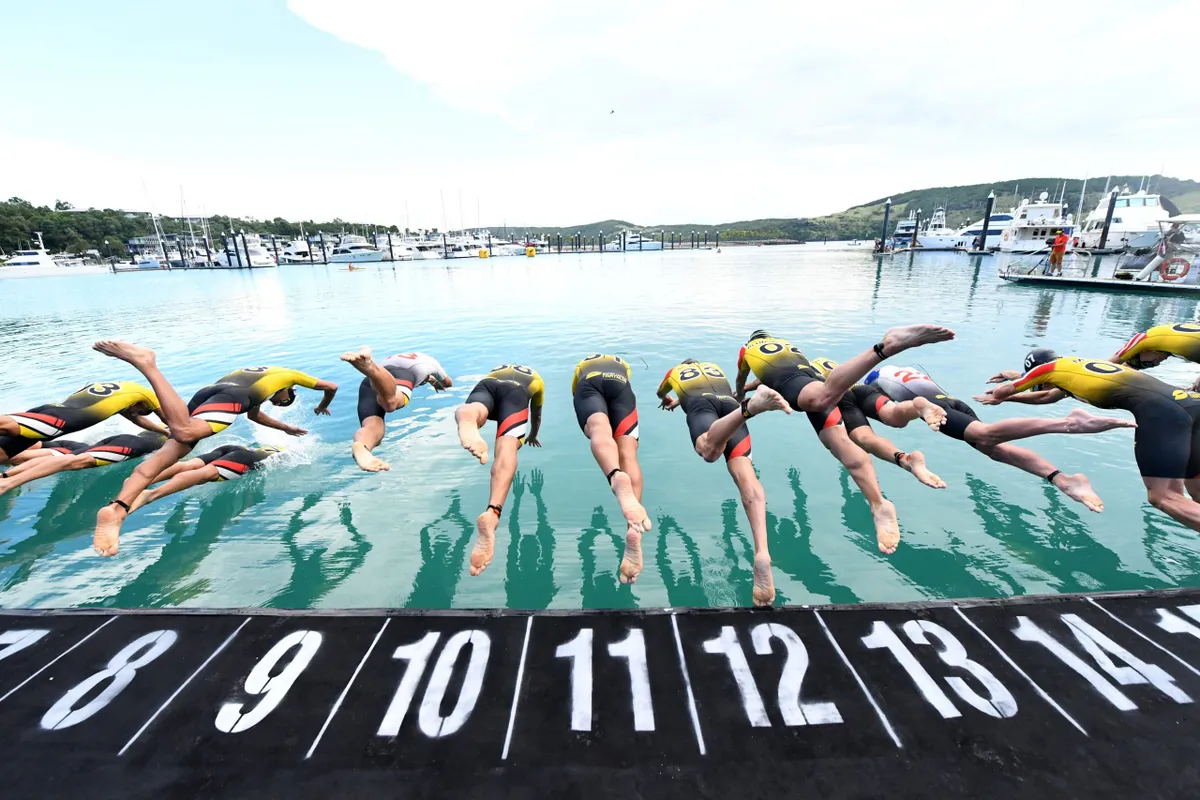
Super League Triathlon (SLT) is the brainchild of one of the sport’s most charismatic individuals, the two-time Ironman world champion Chris McCormack, alongside Belgian businessman Michael D’Hulst and Russian venture capitalist billionaire Leonid Boguslavsky.
As with all new ventures, they had no idea what to expect with their showcase event in March 2017 on Hamilton Island, Australia. All they knew was that they “wanted to be creative and innovative in the way triathlon was delivered to a TV audience,” says McCormack on email.
“We changed up the formats and the rules to bring an element of unpredictability and excitement to racing – to a sport that, for the majority of viewers, can be relatively mundane.
“We knew we were onto something when the athletes came up to us after the first event saying it was the hardest racing they’d ever done. Multiple days of competing, live eliminations and courses that demand skill, fitness and a level of professionalism changed the entire dynamic.”
But that first race might also be remembered for only featuring a men’s race, receiving criticism from across the sport. Claiming logistical issues for the omission, SLT made it clear that a women’s race would feature from the second event in Jersey, in September 2017, and for all future races.
In a sport that prides itself on gender equality, the decision could’ve proved costly to the Series’ future, but lucky for them their pre-launch intentions proved a huge hit from the off and has done little to hinder the Series’ growing popularity.
So what exactly is the Super League? While it’s winning legions of fans worldwide, there are still many who aren’t aware of this global sporting behemoth, or are at least confused by its multi-race formats – “or they confuse us with other triathlon properties on the market,” admits McCormack .
One of those other ‘triathlon properties’ is of course World Triathlon’s World Championship Series (WTCS), which started life in 2009 and aimed to replicate Formula One in its globe-hopping, points-accumulating race format.
But while it might share the same set-up and world-class roster of elites, the SLT stands alone at the end of the WTCS season, in 2018 starting in Jersey at the end of September before moving onto Malta in October, Mallorca at the start of November, and then Singapore, on 23-24 Feb, for the final.
Each weekend of racing includes two of five possible race formats (see box below), each event mixing up the traditional swim, bike, run format over incredibly short courses, which not only provides a level playing field for each athlete’s strengths to get a look in and count, but also places the spectators right in the middle of the action – all the in-your-face multisport you could ever wish for, in fact.
What are the five different events of Super League Triathlon?
Triple Mix
Master of versatility
The traditional swim, bike, run format but mixed up. so athletes race three stages – 1. 300m S, 5km B, 2km R (10min break); 2. 2km R, 5km B, 300m S (10min break); 3. 5km B, 300m S, 2km R. Athletes are eliminated if they fall more than 90secs behind at the timing checkpoint in any discipline.
Eliminator
Master of tenacity
Again three stages, with the top 15 from stage 1 going on to stage 2, and the top 10 from stage 2 going onto stage 3 – 1. 300m S, 5km B, 2km R (10min break); 2. 300m S, 5km B, 2km R (10min break); 3. 300m S, 5km B, 2km R.
Equalizer
Master of persistency
Stage 1 is an individual time trial (sport chosen on day). The times taken here will then provide gaps for Stage 2, which is an endure-style non-stop race of a 300m S, 5km B, 2km R, 300m S, 5km B, 2km R.
Sprint Enduro
Master of tactical racing
Stage 1: The Sprint. The field will be spilt into 2 groups by lucky draw; each group races a 300m S, 5km B, 2km R; rest until stage 2.
Stage 2: The Enduro. The 12 fastest athletes from the sprint race a mass-start, non-stop 300m S, 5km B, 2km R, 300m S, 5km B, 2km R. The 90sec rule also applies (see Triple Mix).
Enduro
Master of endurance
A non-stop 300m S, 5km B, 2km R… x 3. The two slowest athletes at the end of each discipline are immediately eliminated.
Fantastic for spectators
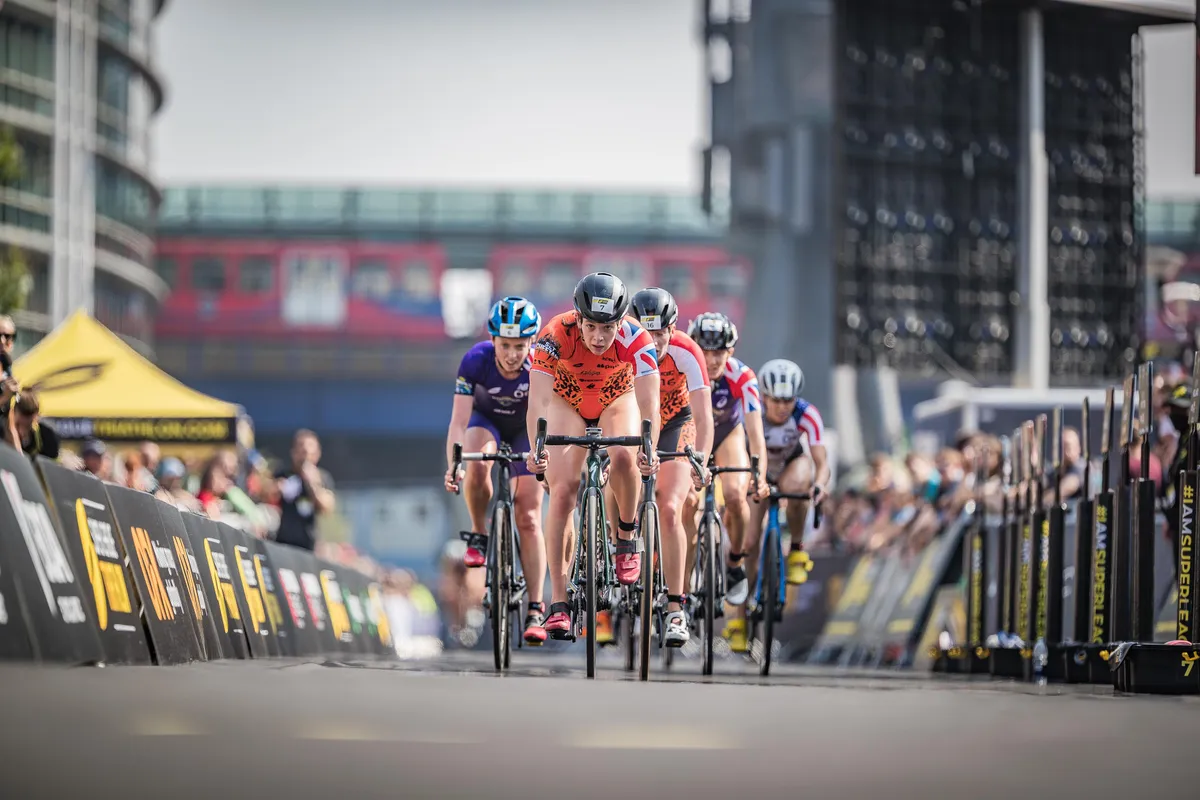
Even the media, often restricted to unhelpful designated areas, are given (almost) free rein. But then equally that isn’t hard given the size of the courses.
What it does offer, however, is almost complete access to the sport and stars, which in this now fleetingly fast-paced world of news consumption is almost a requirement.
Not to mention how Instagram-friendly SLT is – those rainbow-coloured tri-suits (each colour denotes that athlete’s accomplishment – blue the swim leader, green the bike, red the run, white the under-21, grey the transition, pink the overall) against such beautiful and/or historic backdrops make for great shots for even the most amateur of (smartphone) photographers.
And it’s a formula that’s clearly working, with nearly 5 million viewers in 2018 watching each event across SLT’s live online and global TV platforms (the championship races are streamed live in the UK on the BBC Red Button).
“This is a form of triathlon that is watchable and unpredictable and is exactly in line with what modern sports media is trying to push with emerging sports,” says McCormack.
What's the impact of Super League Triathlon?
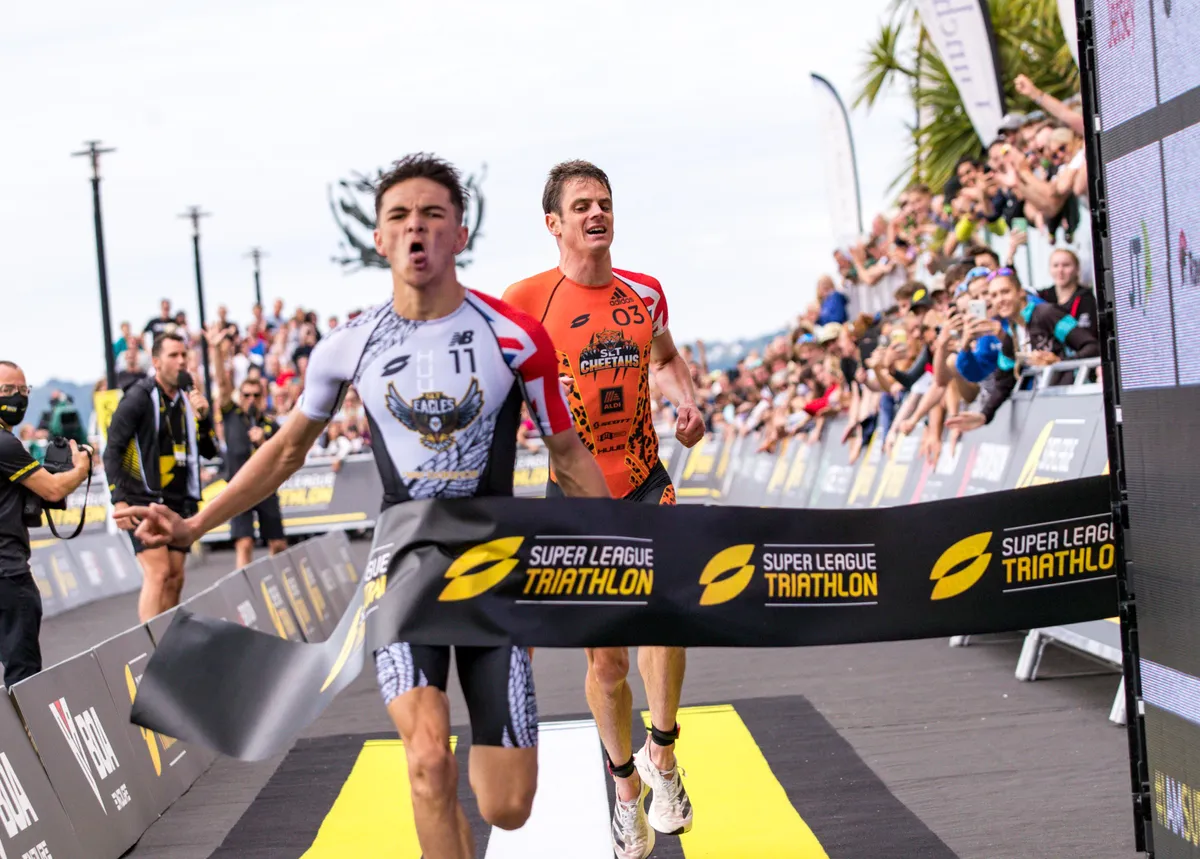
But what about the WTCS? With the new and vibrant SLT winning praise from all quarters, where does that leave the pioneer of live short-course triathlon?
McCormack describes SLT as “watchable and unpredictable”, which you’d be hard pressed to argue with, but can the same still be said of the WTS?
We’d have to say no, the traditional Olympic-distance format having grown tired in recent years, often involving monotonous 40k bike legs over long, flat, and ultimately boring, courses.
World Triathlon has, however, tried to address this by replacing several of the Olympic races with sprints and adding more mixed relays (a fantastic event that keeps audiences guessing from the get-go) to some of its weekends.
The WTCS is also still a necessity for all-important Olympic qualification points and the only route in, plus there's decent prize money ($18k for each race winner, $30k for the Grand Final winners and $83.5k for the overall champions).
While the Super League offers a fun yet still incredibly competitive format, plus serious cash prizes ($20k for each race winner, $1.5k for the Most Combative and Best on Round athletes per race, and $100k for the Series’ winners)
Yet with so many races now on the yearly schedule, how do the elites balance such a hectic season? Why even bother with the Super League?
“It’s not just an amazing way of racing that totally challenges my weaknesses, but the group of people you get to work with really love triathlon and that shows,” said 2014 Commonwealth champion and once Super League regular Jodie Stimpson. “It’s the challenge and excitement of the formats against the best in the world.”
But in an all-important pre-Olympic year, will the SLT still get a look in from the top names? And never mind a pre-Olympic year, what about the big year itself? “There’s no doubt in my mind that I’m signing up for the full series [in 2020], and I’m bloody excited for it,” says Stimpson.
“Federations have very quickly recognised just how important this style of racing can be in the development of athletes for the Olympics,” adds McCormack.
“The refinement of skills in transition, speed and technical improvements are massive. And with the addition of the Mixed Team Relay at the Tokyo Olympics, this gives athletes the opportunity to build for Olympic selection.
“We want Olympic champions in the Series,” he continues. “This is the professional racing series of the world, and, like tennis, they can do both.
"Our events in 2020 will begin post-Tokyo and usually, post Olympics, athletes are very eager to push on and professionalise their success. For those who fail, they look at building their game.”
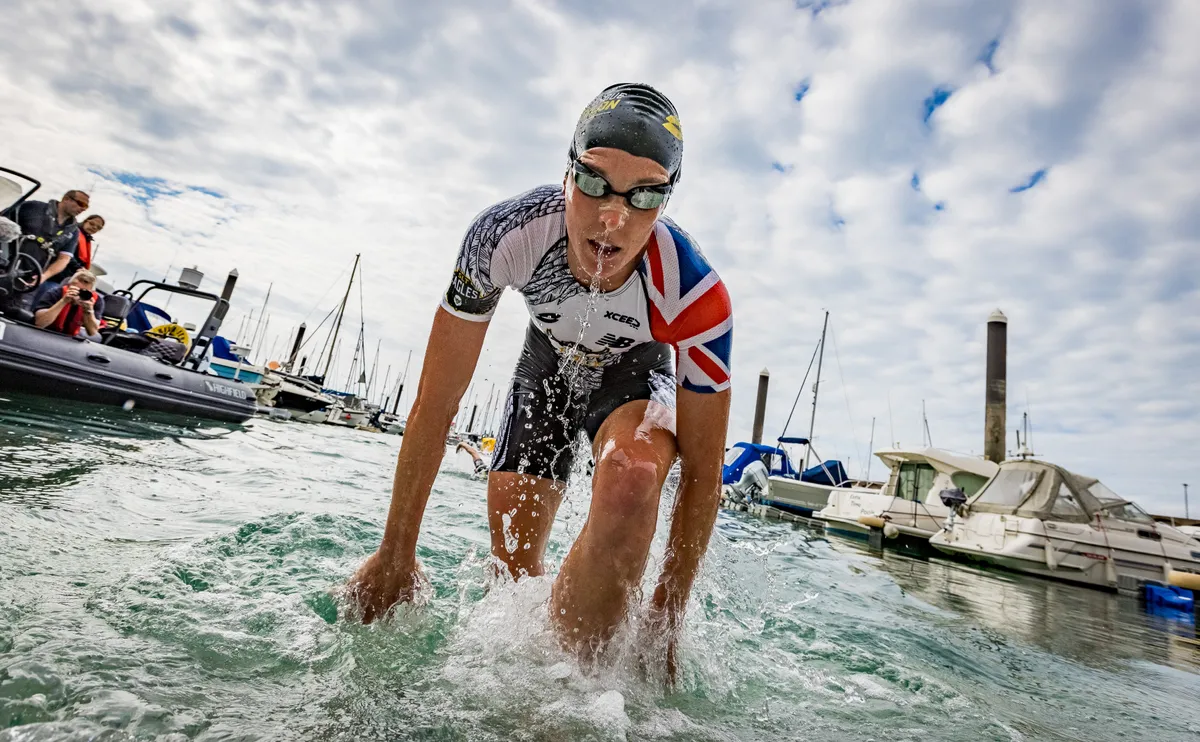
Can age-group triathletes take part in Super League Triathlon?
The elites give the SLT its star power; the personalities and talent the reason why TV rights have been sold to 201 countries across the globe. But as of Jersey 2018, age-groupers were also invited to race either a Super Sprint or Enduro (a Super Sprint x 2) event on the same course as the elites over the same weekend.
Tickets cost a competitive £55 for the Super Sprint, £75 for the Enduro, £90 for the Super Sprint Relay and £120 for the Enduro Relay.
Jessica Pinel raced the Super Sprint in Jersey, and was lured by the added bonus of a goodie bag, photos and a mini movie of her own individual race experience on completion.
“Although priced more than other local races, participants also got to see the pros in action and heaps of entertainment,” says Pinel. “The race distances allowed a vast array of abilities to participate. It pushes athletes above and beyond their limits.”
Keen not to charge exuberant participation fees, and unable to host big numbers due to location size, SLT’s funding is primarily derived from sponsorship and creating corporate experiences through their Corporate Mix Relay and Executive Relay divisions.
In Mallorca, Mario Mola, Javier Gomez and Alistair Brownlee were all racing in the ‘age-group’ Team Enduro wave, allowing amateurs to race on the same course at the same time against the absolute best short-course triathletes in the world (Nirvana offered VIP race packages from €854.61, excl. flights).
How does Super League Triathlon make money?
So as a business model, the SLT seems to be nailing it, with individuals, companies and tourism authorities all wanting a piece of the perfectly-packaged SLT pie.
“The sponsorship investment dollars will come from companies that like the demographic and the thought of this sport, but have never been able to invest in it,” says McCormack.
“We’re a highly engaged community with a very large media footprint. Destinations see this as the biggest advantage – bespoke commercials of their destinations for a fraction of the cost of other big sports.”
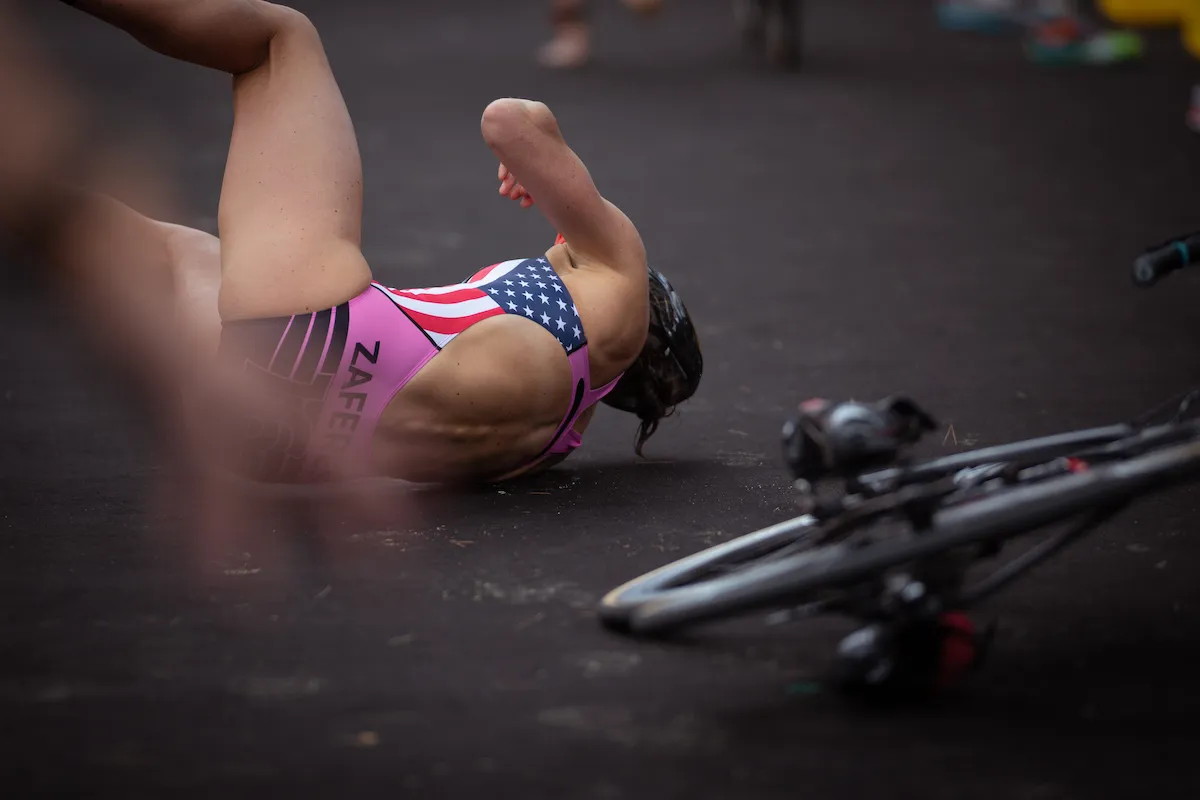
What's the future for Super League Triathlon?
It’s easy to forget that Super League is [at time of writing] only eight races into its existence. But being in Mallorca, it felt like we were the new kid in sixth form.
This huge, globe-travelling family has, in an incredibly short space of time, won the hearts, minds and wallets of an endurance audience ready for the next big thing. So what is the next big thing for SLT?
“My dream would be for a triathlete to be recognised at the ESPY or the Laureus Awards as a winner,” says McCormack. “I grew up surfing, and I recall in 1992 [pro] Tom Curren saying the same thing. They brought change to their organisation resulting in the WSL (World Surfing League).
"Most people laughed and said surfers were dropouts. Kelly Slater arrived and now surfing is one of the most valuable sports properties in the world.
"Triathlon is bigger than surfing was at that time, and is growing at a much steeper rate. If we get this right, and if the true lovers of the sport get behind what we do, anything is truly possible."
Top image credit: Darren Wheeler – That Cameraman/SuperLeague
